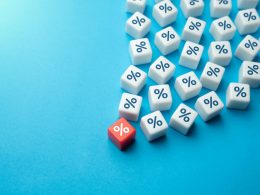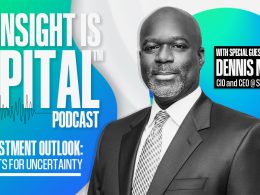(One great way for authorities or central bankers to stimulate an economy is by providing capital for residential construction. This results in increased employment and spending on materials and components. When the economy heats up in response, however, a housing bubble often ensues. Home prices rise and speculative buying follows. The only thing missing is end-buyers for the unneeded or unaffordable homes. It’s particularly interesting to note that excess residential investment contributed in a major way to the recent problems in China, Ireland, Spain and the U.S. In all four countries “Potemkin villages” of new homes grew up, suggesting economic vigor . . . but standing empty.)
In China’s case, capital wasn’t withdrawn by external lenders. Rather, the central planners decided it was time to reduce stimulus. In this way leverage would be reduced, the rate of fixed asset investment would ease, and the economy would be kept from overheating and inflating. However, as has been seen throughout history, planned economies tend to defy the planners, and cycles are hard to modulate.
China’s economic growth has slowed, and living with declining growth has turned out to be no easier in China than elsewhere. Worldwide economic weakness and cost-advantage-eroding inflation have reduced the demand for Chinese exports, a main prop supporting China’s economy. It has been made clear that (a) internal consumption isn’t enough to give China’s economy the growth it needs and thus (b) China isn’t without dependence on the rest of the world. It has yet to be determined whether China’s landing will be soft or hard.
And if China lands hard – in part because of weak demand from the rest of the world – will its weakness feed back, further weakening those nations from which China buys raw materials and finished goods? The world’s economy is complex, interrelated and interdependent. China is a major example of this and, at this moment, a contributor to worldwide uncertainty.
So what do we find? Economic fragility throughout the world, I think, as well as a number of factors capable of exacerbating the situation in the short run or keeping it weak in the long. I can’t remember a time when no jurisdiction was considered completely safe for investment, but that seems to be the case today. When people enthuse about the U.S., it’s usually only in relative terms: “the best house on a bad block.”
At the University of Chicago in the 1960s, I was taught that U.S. Treasury bills paid the “risk-free rate of return.” Nowadays most investors have trouble thinking of anything as riskless. When I talk to investors, most of them snicker uncomfortably about the proposition of even U.S. Treasurys being entirely safe.
Is There No Good News?
Isn’t there anything on the positive side of the ledger, capable of balancing against the weak fundamental picture described above and making investment attractive? A few things deserve mention, I think.
The first is the possibility that things won’t turn out to be as bad as I describe. Because of the impact of psychology on people’s thought processes, it often turns out that things aren’t as bad (or as good) as they seemed at the extremes. But since I’m not a big believer in macro forecasting, I don’t believe there’s a way to prove that my negativism isn’t fully warranted.
The second is the fact that asset prices are reasonable in many cases, at least relative to other investments or to history.
In 1999, when everyone was unworried, the S&P 500 traded at more than 30 times earnings. Today the p/e ratio has more than halved, and it is well below the post-World War II average. In addition, dividend and earnings yields on equities are unusually favorable relative to the yields on bonds. There’s no doubt that stocks have cheapened relative to historic parameters – although the case can also be made that they aren’t cheap enough, since future growth is unlikely to be at the historic rate.
Yield spreads on high yield bonds relative to Treasurys are at levels that historically have been considered generous and have consistently given rise to subsequent returns well above those on Treasurys. In other words, the reward for accepting credit risk via high yield bonds is at a level that in the past has more than compensated for the credit risk entailed. Although there’s far less historic data, the same seems true of senior loans and mezzanine debt.
Real estate prices have corrected from the peak of 5-6 years ago and are largely back to the pre-bubble levels of a decade ago. Residential real estate prices are well down from the peak, and the same is true for commercial real estate in all but a half dozen first-tier cities.
And why is this true? Because of the third factor: investor psychology that is much curtailed from pre-crisis levels. This is very healthy from a buyer’s point of view.
The Psychological Environment
These are uncertain times – there’s no doubt about it. The macro outlook is quite unclear, and the level of investor confidence is commensurately low. This reminds me of something that happened – in the larger, non-investment world – eleven years ago this week.
I was in New York on 9/11, and I experienced the uncertainty, fear and confusion firsthand. When I finally got to California several days later, I sat down with my son Andrew, then fourteen years old, to make sure he was okay given what had transpired. He asked me, with his usual perceptiveness, “Dad, is the world less safe than it used to be?” The right answer came to me: “Maybe it’s less safe than it used to be . . . and maybe it was never as safe as people thought it was.” Similarly, the macro future seems far more uncertain today than at any time in my experience, but there’s a good chance it was never as certain as people thought.
In the 1980s and ’90s, everything went right. Economic growth was strong. Companies thrived. There were great gains in productivity and technology. Profits rose dramatically. Interest rates declined. Inflation was quiescent. Equities soared. Houses and 401k accounts appreciated, producing a positive “wealth effect.” The world was largely at peace. All of this contributed to positive psychology, feeding back to further spur economic strength in a classic virtuous circle. Was this a period in which favorable outcomes were entirely dependable, or just one in which the underlying processes met up with good luck, producing favorable outcomes? And if the latter, were the results better than people should have expected to continue?
Regardless, people did extrapolate them. When stocks returned 20% a year in the 1990s, rather than the normal 10%, investors ratcheted up their return expectations for the subsequent years, and with them their allocations to equities. Everyone knows that if you reach into a bag containing both black and white balls and pull out ten white ones in a row, the probability has increased that the next one will be black. But in the investment world, events like that serve to convince people that there are only white balls – favorable outcomes – in the bag. That’s part of the illogical, emotional thinking that makes for bull markets and bubbles. So by the time the late 1990s rolled around, many investors had concluded that the world was a benign place in which profits were inevitable. That is, that there was little risk or uncertainty.













